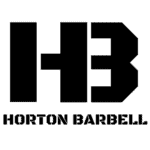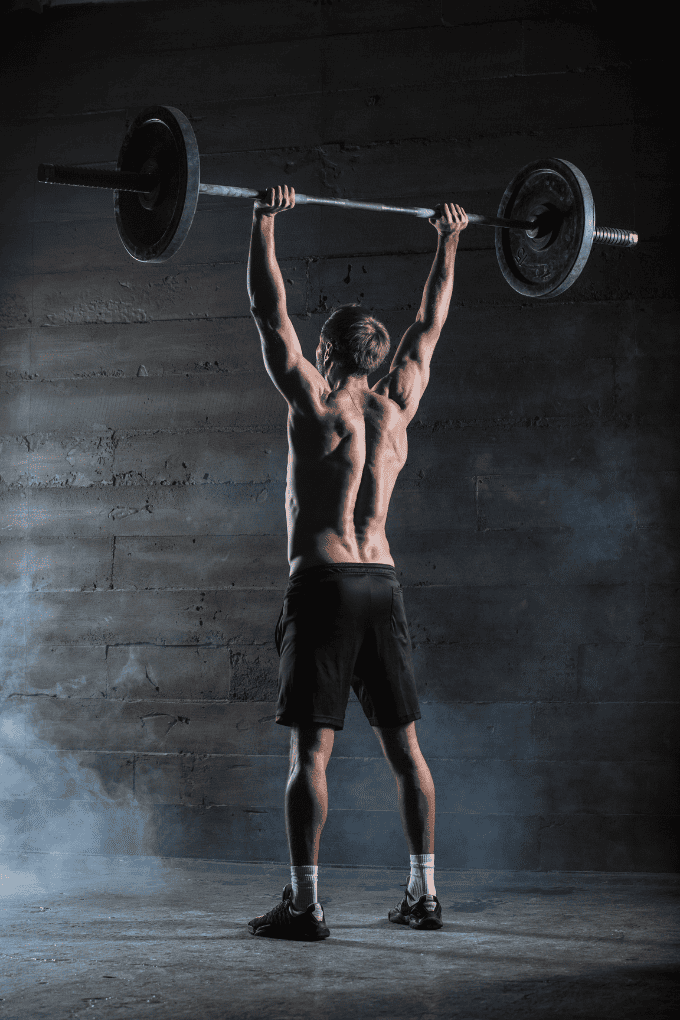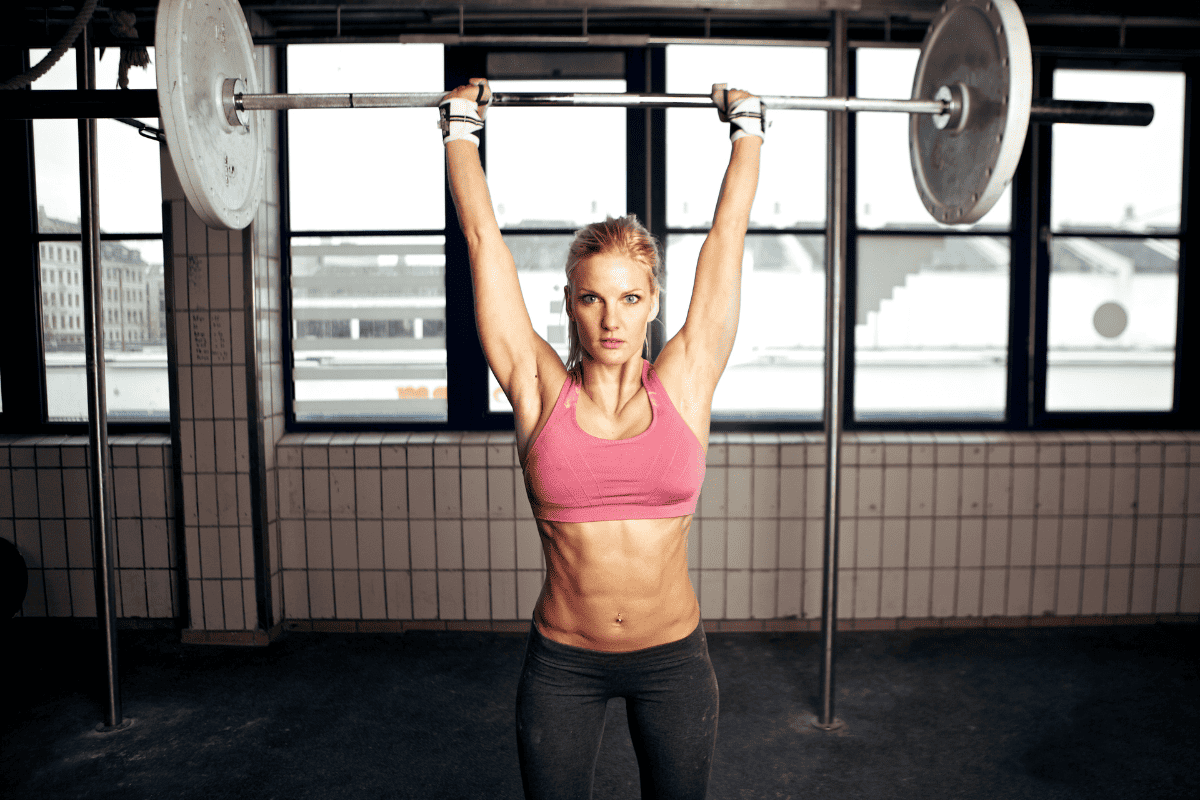Thrusters vs Push Press (Differences and Benefits)
The push press and thrusters have cemented their positions as foundational lifts for both novice gym-goers and elite athletes alike.
But while they might share similarities in explosive movement and overhead pressing, they each offer unique benefits and challenges.
I’ve been a strength and conditioning coach in collegiate athletics for 20 years and in this article, I’m going to be comparing and contrasting the Push Press vs Thrusters.
I will detail the benefits of each along with instructions and coaching tips on how to perform both exercises properly. Then, I’ll do a direct comparison of the two exercises to help you decide which (or maybe both) you should be doing in your program.
What’s the Difference?
Because the exercises are so similar, you may just want to know what the actual difference is between Thrusters and Push Press. Here ya go:
Both exercises involve an explosive overhead press. The difference comes in the dip (Push Press) or squat (Thruster) done prior to the press.
A Push Press involves a 3 to 6-inch dip of the hips to generate power and help explosively drive the barbell (or dumbbells) overhead. On the other hand, a Thruster includes a complete, full range of motion, Front Squat before driving into the Overhead Press.
Now, let’s break each exercise into more detail. First – Thrusters.
Thrusters

Equipment Needed
- Barbell
- Bumper Plates (Iron Plates are technically okay too, but you’ll need to be careful putting the bar down)
Muscles Worked
- Thrusters are a total body exercise. Almost every muscle group in the body is utilized at some point during the movement.
How To
- Start with the barbell in a front rack position – the same as you would for a Front Squat.
- To get to this position you can either take the bar out of the rack or clean it from the floor.
- Now, with feet shoulder-width apart and core braced, descend down into a Front Squat.
- Once you reach full depth, explosively drive up.
- As you reach full extension with the hips, drive the bar up to an overhead position.
- Return the bar back to the starting position on the shoulders and repeat.
Coaching Points
This is a complex movement, combining the movements of two technical lifts – the Front Squat and the Push Press. If you’re not already proficient in both of those lifts I would recommend following the links to each of those individual exercises and becoming familiar with those first.
I know many CrossFit workouts prescribe a high volume of Thruster reps and encourage you to work as fast as possible. Having said that, always make sure that you’re able to maintain proper technique and keep a braced core when squatting.
Don’t let the combination of fatigue and trying to rush cause you to use poor technique as this can lead to injury.
Benefits of Thrusters
Here are three key benefits of incorporating thrusters into your strength program:
Full Body Engagement
One of the primary benefits of the Thruster is that it engages multiple major muscle groups simultaneously. The squat portion targets the quadriceps, hamstrings, glutes, and calves, while the pressing movement works the shoulders, chest, and triceps.
The core is also heavily engaged throughout the movement to stabilize the body, especially during the Overhead Press.
Functional
It teaches the body how to move and work in a coordinated fashion. This is beneficial for anyone from athletes looking to improve movements in their sport to someone wanting to be more efficient at picking up heavy objects and loading them onto a high shelf.
Caloric Burn and Cardiovascular Benefits
Because Thrusters are so intensive and utilize large portions of the body’s musculature, they can result in a significant caloric burn. The combined squat and press require a lot of energy, which can elevate your heart rate quickly.
Performing thrusters in high-repetition sets or as part of a circuit can provide both strength and cardiovascular benefits, making it an efficient exercise for those looking to improve general fitness or lose weight.

Tired of coming up with your own workouts? But don’t want to pay an arm and a leg?
I post workouts 5 days a week right here. (Did I mention they’re free?)
Push Press

Equipment Needed
- Multi-purpose lifting rack
- Barbell
- Bumper Plates (technically possible to do with Iron Plates, but Bumper Plates are highly recommended)
Step-by-Step Instructions
- Set the barbell at the height you would normally front squat with. (Barbell 1-2 inches below the flexed elbow, still on the hooks).
- Grab the barbell with your index finger on the knurling or just outside the knurling. (Flexibility and what feels comfortable are important here).
- Flex the elbows up slightly and keep your knuckles fairly vertical to the ceiling.
- You are not taking a “Front rack” position here. The elbows will be slightly up but the bar is not resting on the anterior delts.
- To unrack the bar, take a deep breath and brace the abdominal muscles and upper back. Use a staggered stance to unrack the bar.
- Take 2 steps backward and be sure that you will not hit the hooks or anything above your head when you start to press.
- Initiate the movement with a “dip” or bend of the knee that will help you propel the barbell up with momentum. Do not bend the knee forward onto the toes.
- Think about how you initiate a squat. The knee bend should be very similar to this movement.
- This is a quick movement that helps get the barbell moving upward.
- As you extend the legs, push the barbell up. Be sure not to hit your chin. Lock the rep out by holding the barbell overhead for about 1 second.
- Some coaches use the queue “push your head through the arms” to help lock out the rep and stabilize the bar overhead.
- Slowly bring the barbell back down to prepare for the next repetition.
Coaching Points
The push press is a compound movement specific to Olympic lifts and powerlifting (depending on the event).
This is also a great movement for field and court sport athletes that need overhead strength and power. This movement should be trained and programmed according to goals, injury history, athlete readiness, and time of year.
This lift is very technical, uses the whole body, and requires patience and persistence, lifters often times have incorrect form without realizing it, go up in weight too quickly, and may injure themselves.
Be patient with your flexibility. Persistence and working hard on your flexibility will pay off with Olympic lifts and variations. Remember to always warm up prior to any lifting session. Work on flexibility drills during warm-up sets as well. After your session, use cool-down techniques, foam roll, stretch, and hydrate.
Push Press Benefits
Here are three key benefits of incorporating the push press into your workout:
Improved Explosive Power
One of the primary goals of the push press is to develop explosive strength, especially in the lower body and shoulders. By using the momentum from the dip and drive phase, you’re training the body to generate force quickly.
This explosive power can benefit athletes in various sports, from basketball players who need to improve their vertical jump to weightlifters aiming to improve their clean and jerk.
Engagement of Multiple Muscle Groups
The Push Press isn’t just a shoulder exercise. It engages a myriad of muscles.
The legs (quads, hamstrings, and glutes) initiate the movement, the core stabilizes the trunk throughout, and the deltoids, triceps, and upper chest drive the barbell or dumbbells overhead. This means you get a lot of muscular bang for your buck with this exercise.
Improved Overhead Stability
Pushing weight overhead requires not just strength but also stability. The push press, with its dynamic nature, challenges and improves the stabilizer muscles of the shoulders and the core.
This can lead to better overall shoulder health and improved performance in other overhead activities and lifts.
Push Press vs Thrusters: Which is Better?
Now, let’s take a side-by-side look at the two movements to see if one is better than the other for specific situations.
Better For Developing Power: Push Press
If you watch Olympic weightlifters, there is a reason they do not drop into a full front squat to drive their jerks overhead. A shorter dip of the hips (which can vary slightly from person to person) is the optimal way to generate the most power to then drive a weight overhead.
Therefore, if you want to train for max power, take a queue from the athletes who have perfected the technique and go with the Push Press.
Better For Cardiovascular Development: Thrusters
Want an exercise that can help you build power and improve your cardio at the same time? Go with Thrusters.
There are really few exercises that are as nightmarishly evil as Thrusters done at high volume. Every single muscle is put to work and total body exertion is not an option, it’s a requirement.
Better For Beginners: Push Press
I’m saying Push Press here, but in reality, this is really close.
I’m giving the edge to Push Press because it involves fewer moving parts. Generally, the less complex an exercise is, the easier it is be newcomers to pick it up.
Regardless of which one you choose – start light and focus on technique. Once your technique is sound you can start to slowly add weight to the movement.

Get Shredded… For Free
Get a free workout Monday through Friday, posted right here on Horton Barbell. These workouts are designed to help you get strong, in shape and look great at the beach!
Final Thoughts
Both the Push Press and Thrusters are invaluable tools in the strength-training arsenal, offering distinct paths to power development and full-body coordination.
While they are similar in challenging our overhead capabilities, their different techniques target slightly different muscle groups and athletic outcomes.
By understanding their subtleties, one can craft a more tailored and effective workout regime. Whether you’re aiming for sheer power with the Push Press or seeking the combined intensity of the Thruster, mastering both will undeniably elevate your fitness game.

